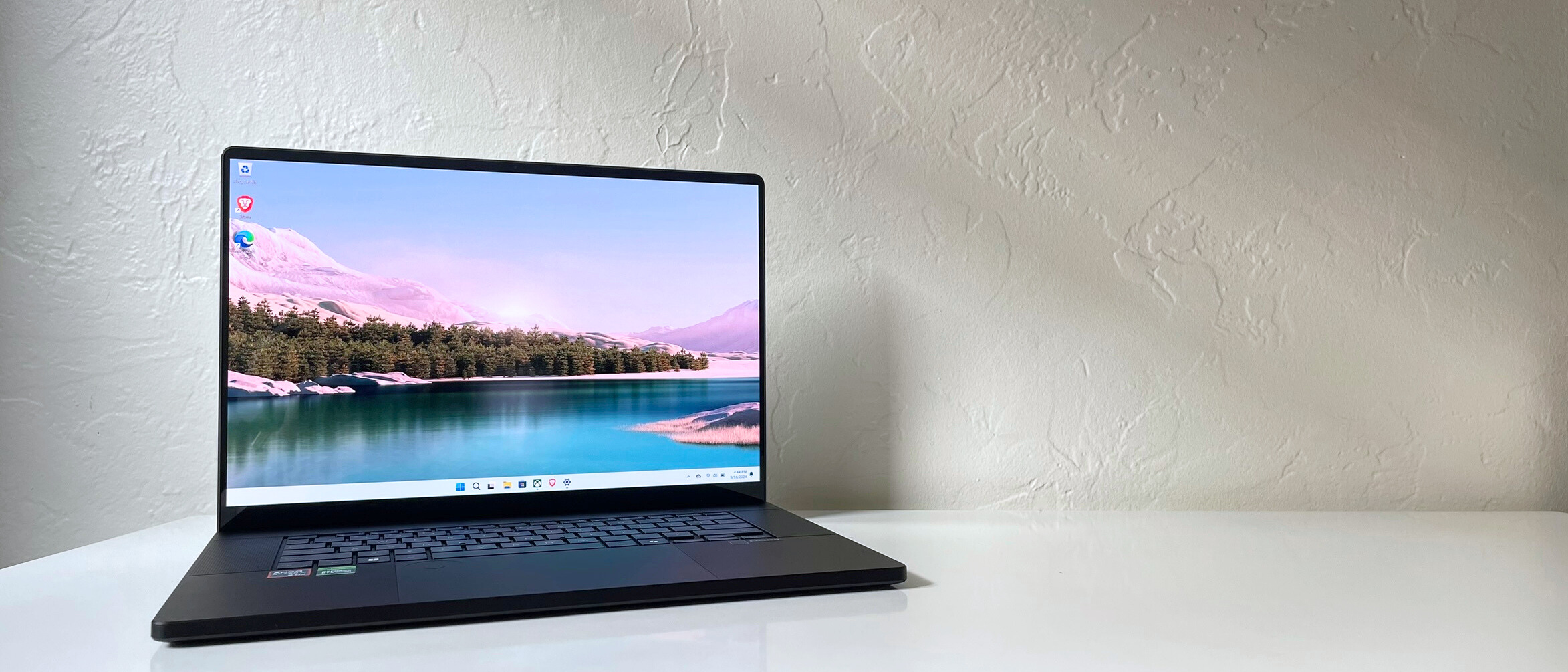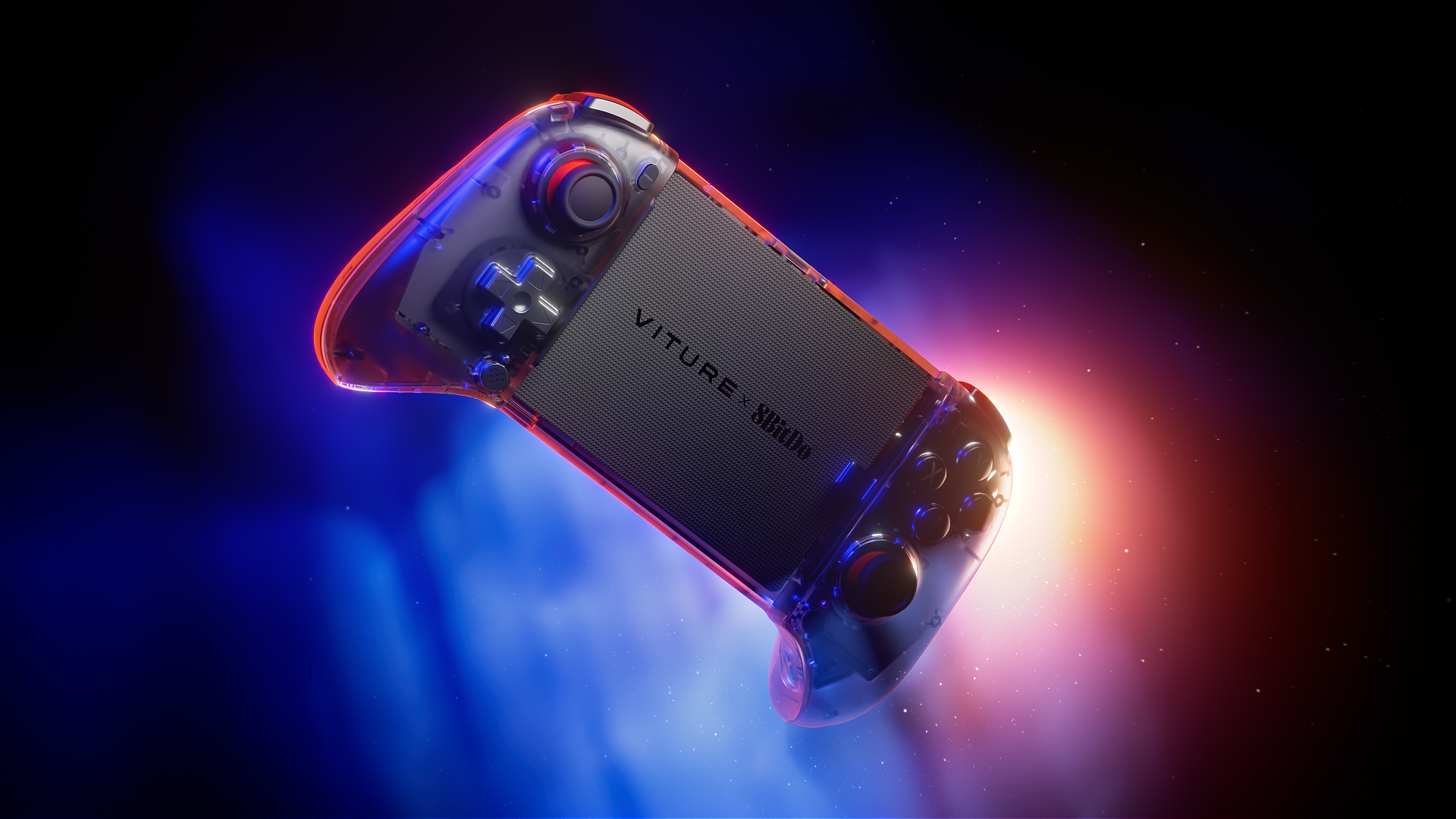Laptop Mag Verdict
The ASUS ProArt P16 is a superb creator laptop that pairs impressive performance scores with a stylish satin black design. No matter what kind of creative work you need to get done, the ProArt P16 is a laptop well worth considering.
Pros
- +
Stellar graphics performance
- +
Top-firing speakers
- +
Great touchpad and keyboard
- +
Competitive AI performance
Cons
- -
Display could be brighter
- -
Below-average battery life
Why you can trust Laptop Mag
The ASUS ProArt P16 is a stellar example of what a creator laptop should be: powerful, reliable, and stylish.
This 16-inch powerhouse is one of the latest entries in ASUS’s revamped ProArt line-up, which also includes the smaller ProArt PX13. Both feature a stunning new chassis design and AMD Ryzen AI 300 series processors. The ProArt P16 pairs powerful specs with a roomy 16-inch OLED display.
Many creators might go straight for a MacBook Pro when choosing a new laptop, but that could be a mistake. If you don’t believe me, just take a look at how well the ASUS ProArt P16 performed in our thorough lab testing. This is a creator laptop that’s well worth considering, whether you want to work on video editing, graphic design, animation, or anything in between.
ASUS ProArt P16 (2024): Specs (as reviewed)
| Price | $2,300 |
| CPU | AMD Ryzen AI 9 HX 370 |
| GPU | NVIDIA GeForce RTX 4070 laptop GPU with 8GB of VRAM |
| RAM | 32GB |
| Storage | 2TB |
| Display | 3,840x2,400 Touch OLED |
| Battery life | 9:32 |
| Dimensions | 13.97 x 9.72 x 0.59 inches |
| Weight | 4.08 pounds |
ASUS ProArt P16 (2024): Price and configurations
The ASUS ProArt P16 starts at $1,899.99 for a base configuration including an AMD Ryzen AI 9 HX 370 CPU, NVIDIA GeForce RTX 4060 laptop GPU, 32GB of RAM, and 1TB of storage. If you want a little more storage or power, two upgraded configurations are available.
The first upgraded configuration, which we reviewed, costs $2,299.99 and includes an AMD Ryzen AI 9 HX 370 CPU, NVIDIA GeForce RTX 4070 laptop GPU, 32GB of RAM, and 2TB of storage.
The maxed-out version of the ProArt P16 costs $2,699.99 and includes an AMD Ryzen AI 9 HX 370 CPU, NVIDIA GeForce RTX 4070 GPU, 64GB of RAM, and 2TB of storage.
ASUS ProArt P16 (2024): Design

The ASUS ProArt laptops feature one of my favorite designs. Like its little sibling, the ProArt PX13, the ProArt P16 has a minimalistic, yet classy matte black chassis. The anodized “Nano Black” colorway looks polished and sophisticated, especially with extra details like the glossy edges on the lid and the metallic ProArt logo.
The keyboard deck sports a pair of top-firing speakers, which are one of my favorite features to see on any laptop. However, since they’re placed on the sides of the keyboard, there’s no number pad. I don’t mind the trade-off, though. There’s still a full-size function row, as well. The power button is also on the keyboard deck, but it’s in the top right corner, separate from the main keys, which helps avoid accidentally pressing it while typing.
The ASUS ProArt laptops feature one of my favorite designs.
At just over four pounds, the ProArt P16 is light for a 16-inch creator laptop, coming in just below the Galaxy Book 4 Ultra (4.1 pounds) and considerably lighter than the 16-inch MacBook Pro M3 Max, which weighs in at 4.8 pounds.
It’s also worth noting that unlike the smaller ProArt PX13, the ProArt P16 is not a 2-in-1, meaning you can’t flip the display around to use in tablet mode. For most users, that may not be a big deal, but it could be a deal breaker if you’re an artist or graphic designer who needs tablet mode functionality, in which case the PX13 might be a better fit.
ASUS ProArt P16 (2024): Ports
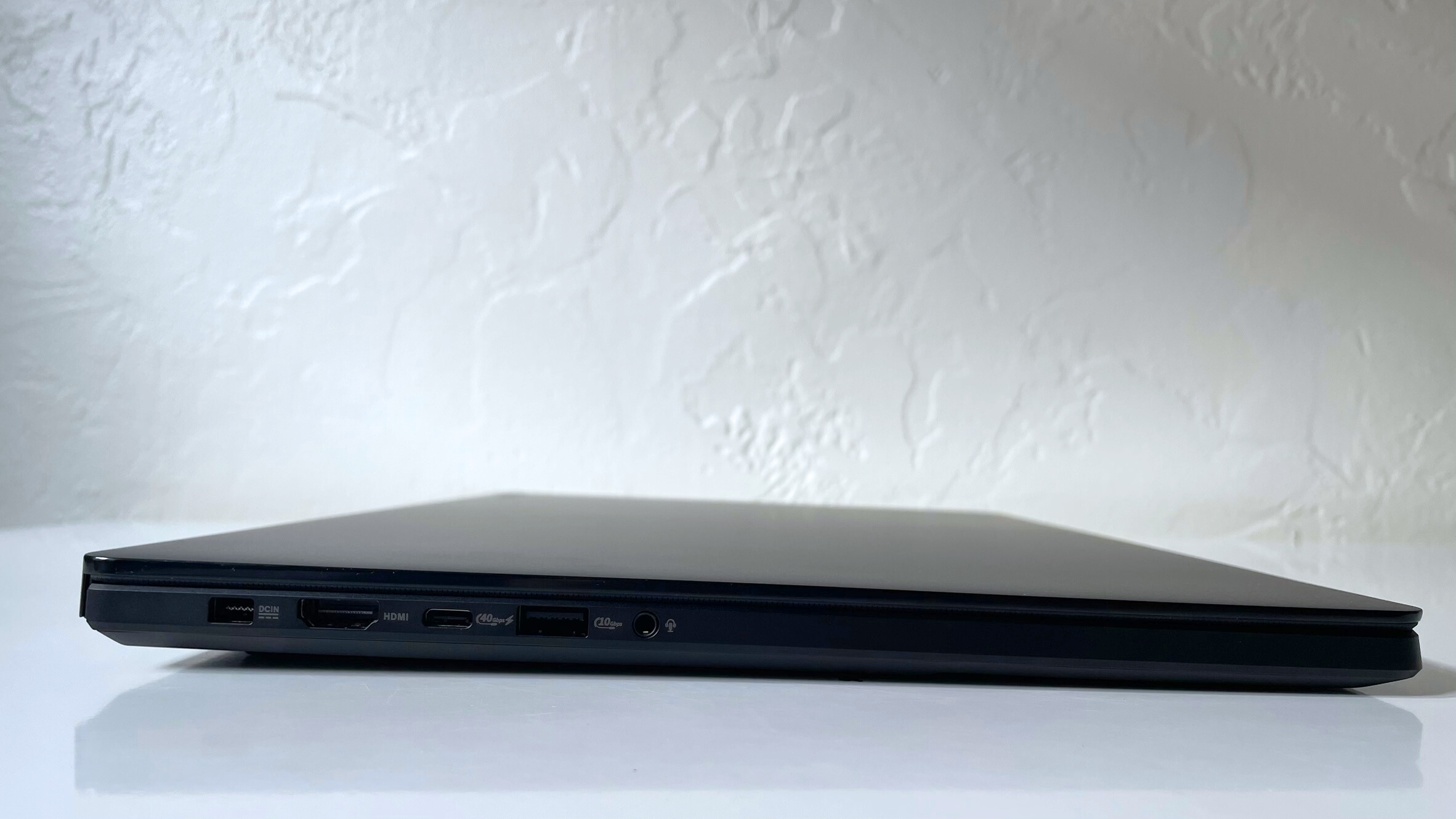
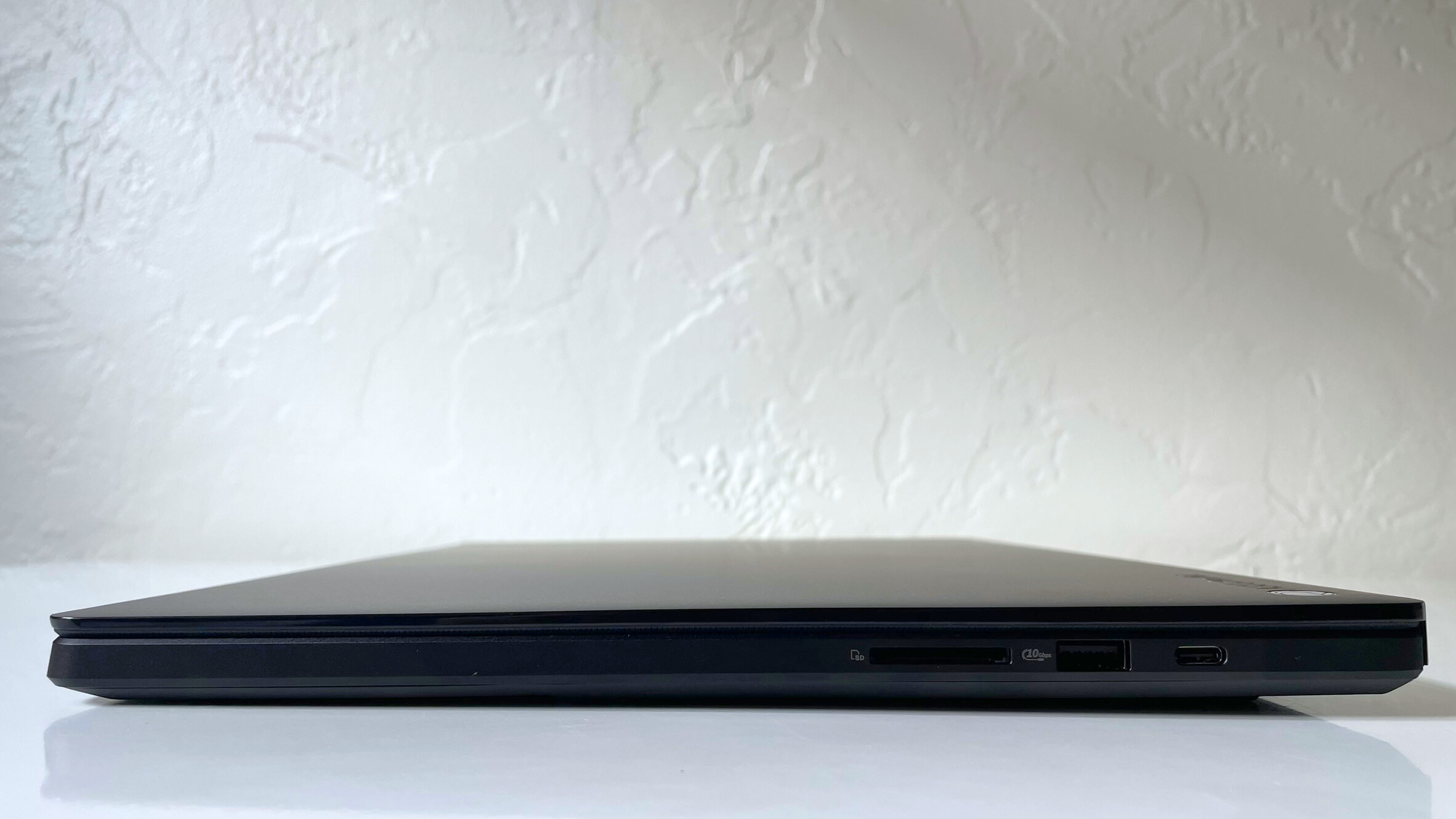
The ASUS ProArt P16 has all the ports most creatives need. On the left side there’s a charging port, an HDMI port, a USB Type-C port, a USB Type-A port, and a headphone jack. On the right side there’s a USB Type-C port, a USB Type-A port, and a full size SD card slot, which is a rare find on laptops.
That was plenty of ports for me, but if you find yourself needing more, you can add a USB Type-C hub or a docking station to your laptop setup.
ASUS ProArt P16 (2024): Display

The ASUS ProArt P16 has an OLED display that looked great during my hands-on testing. I did some gaming on it and watched some Survivor and NWSL highlights. The 3840x2400 resolution on the P16's display means everything shows up in sharp focus with great detail. I especially loved how good No Man's Sky looked with its bright, otherworldly graphics. However, while the ProArt P16's display looks good in everyday use, it could have scored better on our display tests.
The 3840x2400 resolution on the P16's display means everything shows up in sharp focus with great detail.
The ProArt P16 reproduced 85.5% of the DCI-P3 color gamut and achieved an average SDR brightness of 356 nits. I usually consider 80% of the DCI-P3 color gamut a minimum for creative laptops, so the ProArt P16 just barely passes that bar. However, I would have liked to see a higher score.
The ProArt P16 scored higher than a couple of similar laptops, though. The MacBook Pro M3 Max and Samsung Galaxy Book 4 Ultra both reproduced exactly 81.8 percent of the DCI-P3 color gamut. The MacBook Pro M3 Max had the brightest screen with an average of 559.8 nits.
| Laptop | DCI-P3 color gamut | Avg. brightness (SDR) |
|---|---|---|
| ASUS ProArt P16 | 85.5% | 356 nits |
| MacBook Pro M3 Max (16-inch) | 81.8% | 559.8 nits |
| Samsung Galaxy Book 4 Ultra | 81.8% | 384 nits |
ASUS ProArt P16 (2024): Keyboard and touchpad
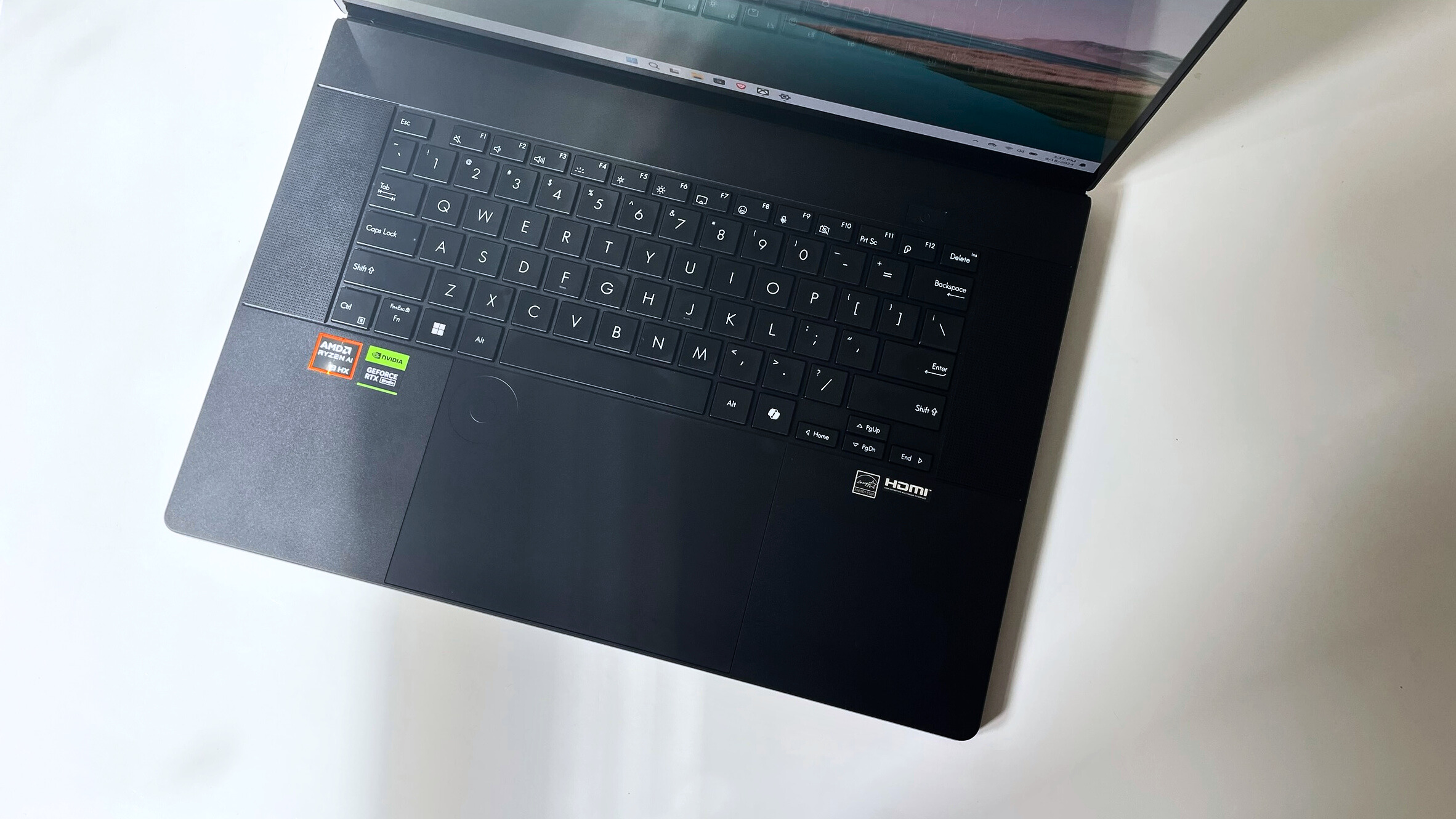
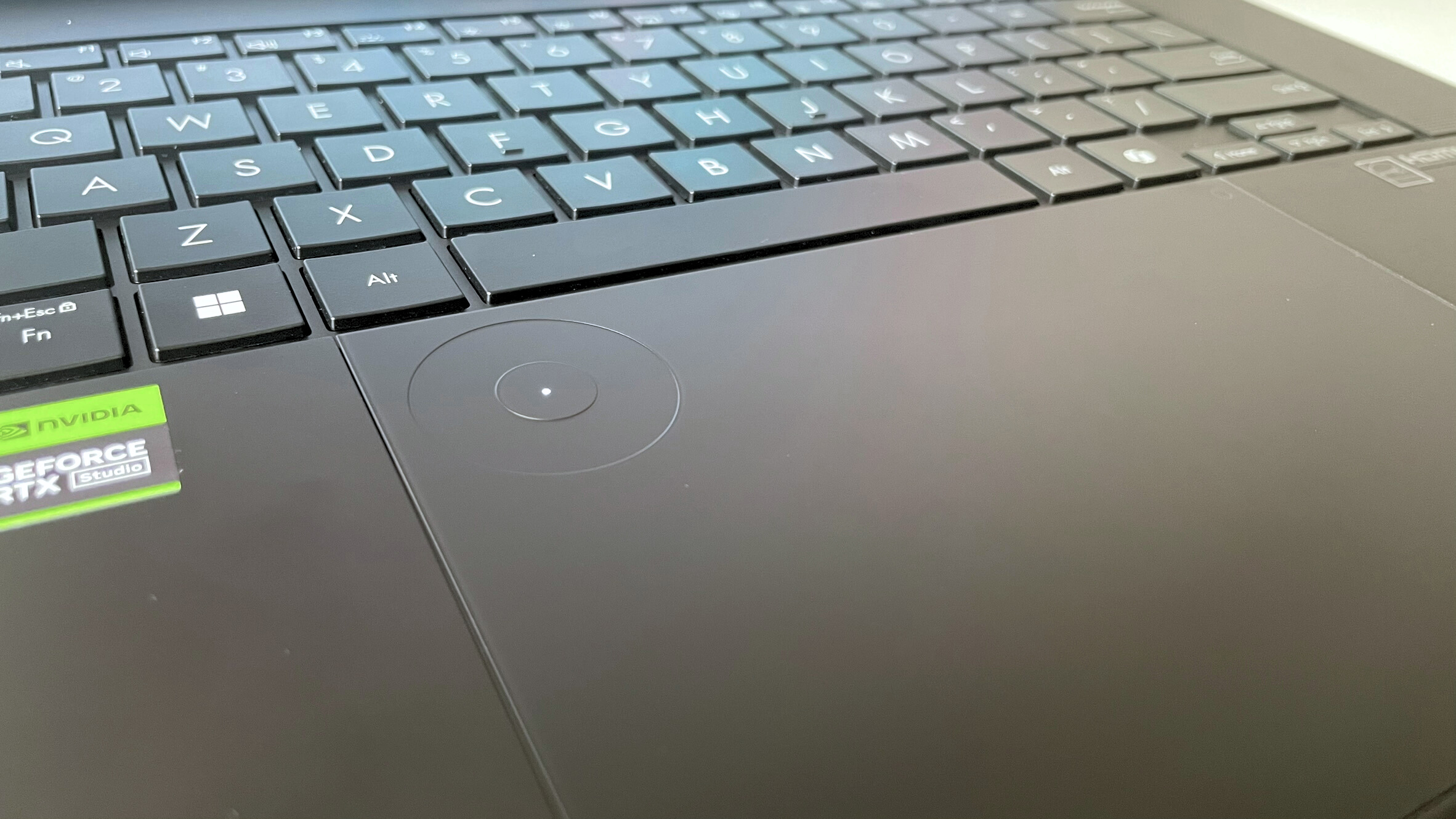
The ASUS ProArt P16’s keyboard offers a smooth, tactile typing experience that’s responsive and reliable. It was great for typing and gaming alike in my hands-on testing, although the actuation force is a bit high for my liking. Overall, though, it’s a stellar keyboard.
On the Monkeytype typing test, I scored 102 words per minute with 99 percent accuracy on the ProArt P16, which is well above my laptop average of 90 words per minute with 97 percent accuracy. That’s also close to what I scored on the smaller ProArt PX13 (104 words per minute, 98 percent accuracy), which effectively has the same keyboard.
The touchpad on the ProArt P16 has a soft but satisfying amount of tactile feedback and a smooth, matte finish. I thoroughly enjoyed using it during my testing.
It also features the ASUS DialPad, which is a circular area in the top left corner of the touchpad that you can use to quickly adjust settings like volume or screen brightness. You can also use it as a shortcut for different functions in compatible apps. I didn’t use the DialPad much, but if you often use video editing apps, Photoshop, or similar creative tools, it will come in handy.
ASUS ProArt P16 (2024): Audio
The ProArt P16 features a pair of top-firing speakers on the keyboard deck, which makes for a stellar audio experience. The speakers are loud and clear while also capturing detail and quieter sounds well. Background ambience and music in games was rich and immersive. Dialogue in video content was clear and lifelike.
Music sounds great on the P16, too. The textured, electronic tones of the No Man’s Sky soundtrack sounded fantastic while I was gaming. The speakers also captured the melodic highs and deep lows of “The Void” by The Neighbourhood superbly well. The P16 also handled the punchy rock tone of Nothing But Thieves’ “Welcome to the DCC” with ease, delivering crisp electronic guitar notes and smooth vocals with a good balance. The speakers are loud enough that I never found myself cranking up music past 35 or 40.
ASUS ProArt P16 (2024): Gaming and graphics
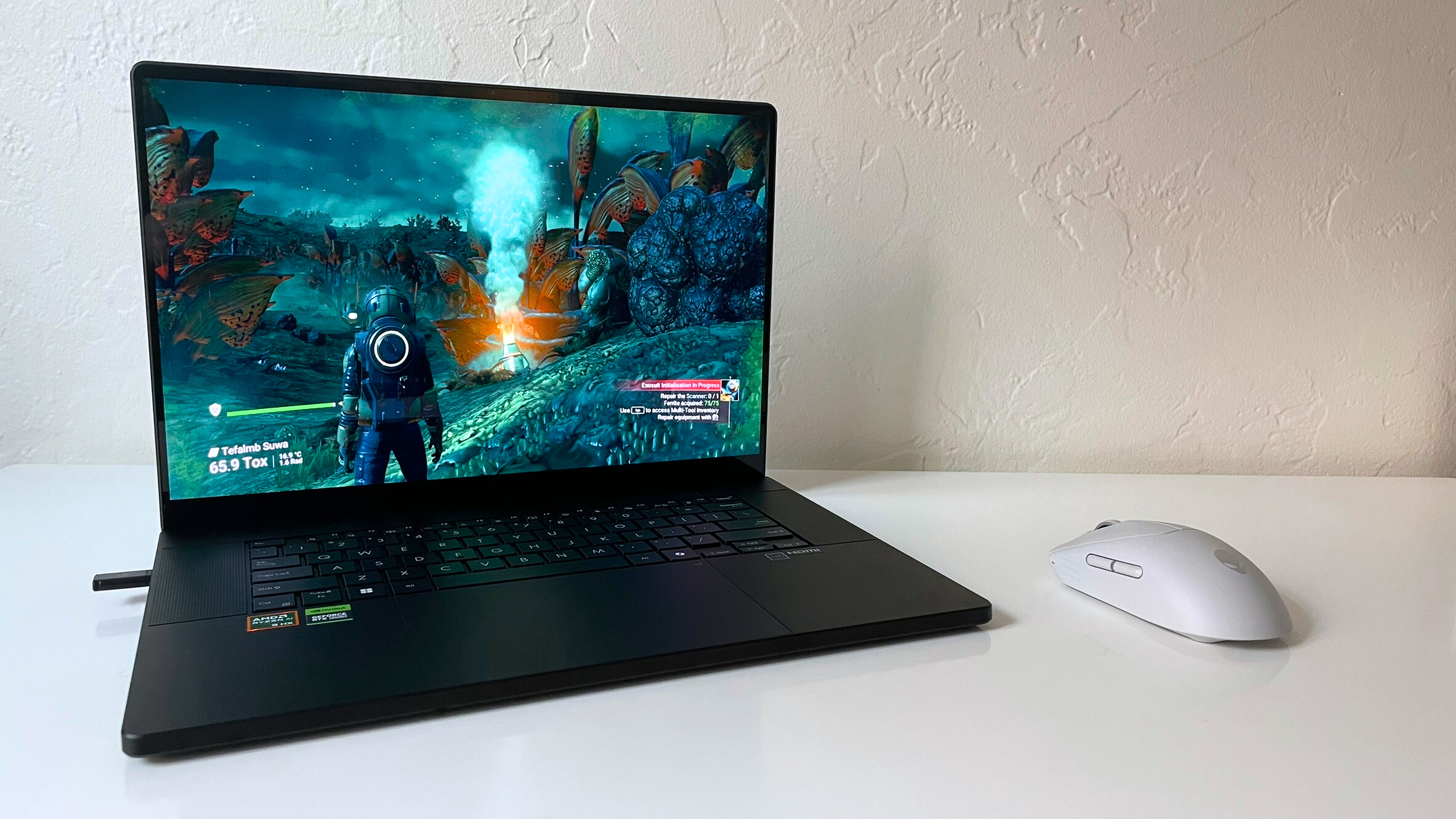
Gaming and graphics performance were excellent on the ProArt P16. It has an NVIDIA GeForce RTX 4070 laptop GPU, so I was expecting fairly good scores and the P16 delivered.
It scored a whopping 24,284 on the 3DMark Fire Strike graphics test and averaged 184.8 frames per second in our Sid Meier’s Civilization VI benchmark. That’s far above what both of the P16’s rivals scored. The Samsung Galaxy Book 4 Ultra did reasonably well on the 3DMark Fire Strike benchmark with a score of 17,255 but only averaged 78.7 fps in Civilization VI, less than half of the ProArt P16’s score.
Gaming and graphics performance were excellent on the ProArt P16.
Unfortunately, it’s hard to compare the MacBook Pro M3 Max in this category since it isn’t compatible with the same graphics tests. However, we ran Civilization VI on it and saw an average of 56 fps in 1920x1200 resolution, which is significantly lower than either the Galaxy Book 4 Ultra or the ProArt P16.
| Laptop | 3DMark Fire Strike | Sid Meier's Civilization VI: Gathering Storm (1080p) |
|---|---|---|
| ASUS ProArt P16 | 24,284 | 184.8 fps |
| MacBook Pro M3 Max (16-inch) | N/A (cannot run the same test) | 56 fps (1920x1200) |
| Samsung Galaxy Book 4 Ultra | 17,255 | 78.7 fps |
The ProArt P16 also performed well in my hands-on gaming tests, although the battery suffered while running games. I did a speedrun of Minecraft (Java edition, version 1.21.1) and experienced a solid 60 fps throughout. However, I had to pause to plug in the ProArt P16 after about 1 hour of gameplay. Of course, games and similarly demanding apps always drain the battery faster than web browsing or video playback, so this isn’t unique to the ProArt P16.
The keyboard feels great for gaming, though. It has just the right amount of tactile feedback for a satisfying gaming experience without slowing you down. It also registered quick double-taps and rapid keystrokes during my speedrun well.
I played some No Man’s Sky on the ProArt P16 and had a great experience with that, as well. The vibrant graphics in No Man’s Sky looked great on the P16’s OLED display. I experienced a consistent and smooth 30 fps, which could be better but the game was still completely playable. The ambience and music in No Man’s Sky sounded phenomenal, as well, thanks to the ProArt P16’s top-firing speakers.
ASUS ProArt P16 (2024): Performance
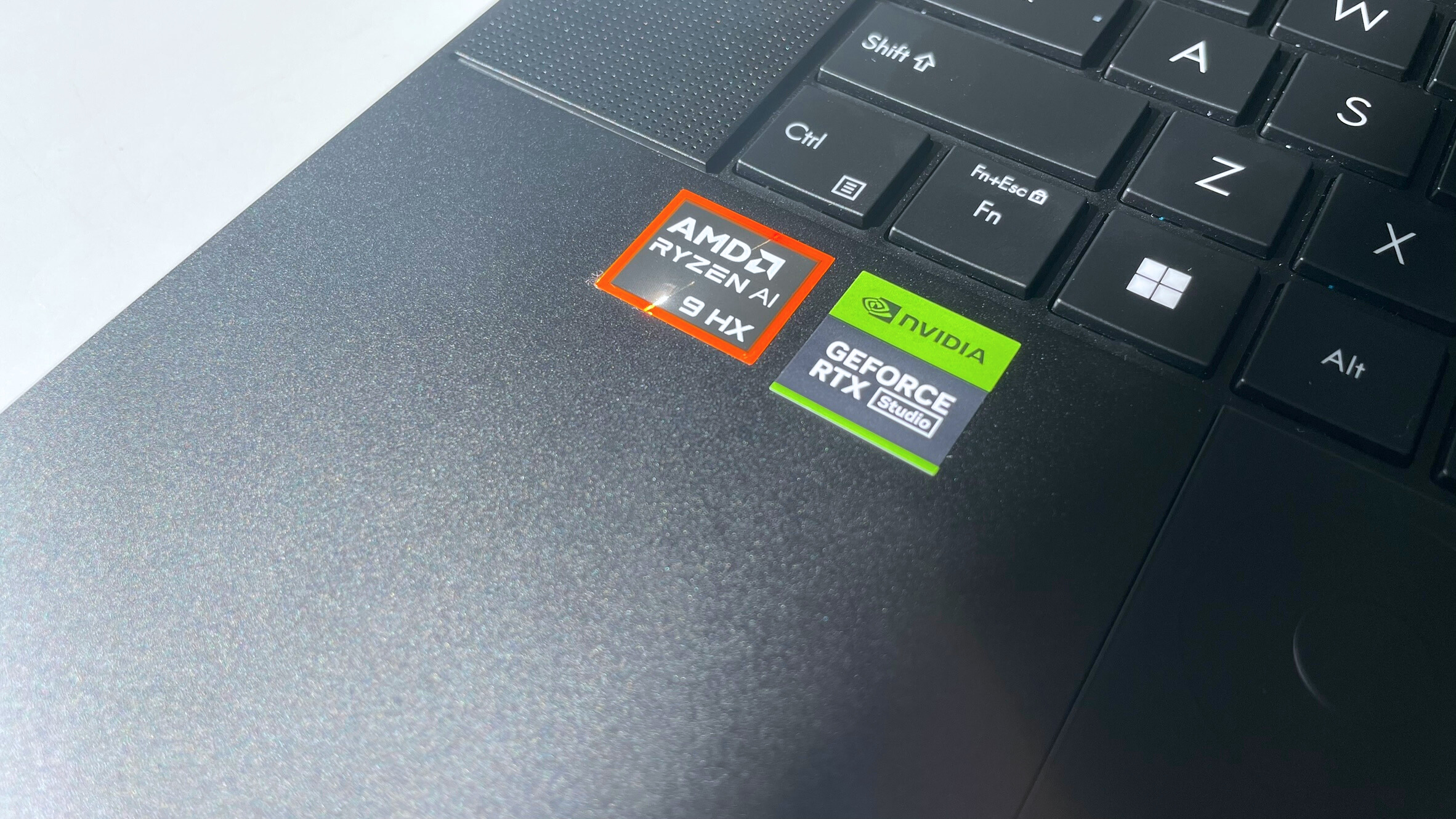
The ProArt P16 is powered by an AMD Ryzen AI 9 HX 370 CPU, which has 12 cores and 24 threads. Its NPU is capable of up to 50 TOPS (trillion operations per second) while the CPU as a whole is capable of up to 80 TOPS.
The ProArt P16 scored well on our overall performance tests, but could have done better in a couple areas. It scored 2,872 on the Geekbench 6 single-core test and 15,286 on the multi-core test. It completed the HandBrake video transcoding test in three minutes and 15 seconds. The ProArt P16’s scores fell right between the scores of the MacBook Pro M3 Max and the Samsung Galaxy Book 4 Ultra across the board.
| Laptop | Geekbench 6 (single-core) | Geekbench 6 (multi-core) | HandBrake time | PugetBench Photoshop |
|---|---|---|---|---|
| ASUS ProArt P16 | 2,872 | 15,286 | 3:15 | 8,279 |
| MacBook Pro M3 Max (16-inch) | 3,083 | 20,886 | 2:37 | N/A |
| Samsung Galaxy Book 4 Ultra | 2,426 | 13,061 | 4:52 | 6,428 |
One notable area where the ProArt P16 excelled was the PugetBench Photoshop benchmark, where it scored 8,279. That’s well above the Galaxy Book 4 Ultra’s score of 6,428. Unfortunately, we can’t compare the MacBook Pro M3 Max’s PugetBench scores since the test received a major update in March 2024 that significantly changed how results are calculated and the MacBook Pro M3 Max was tested before those changes went into effect.
However, even without the MacBook Pro’s score, the ASUS ProArt P16 is clearly a powerful contender when it comes to creative apps. Its PugetBench Photoshop score is even higher than that of the ProArt PX13 (7,948). Considering the ProArt line is designed for creators, this score is arguably the most important of the bunch. It makes a great case for choosing the ProArt P16 over most of its rivals, despite slightly lower scores in other areas.
ASUS ProArt P16 (2024): AI Performance
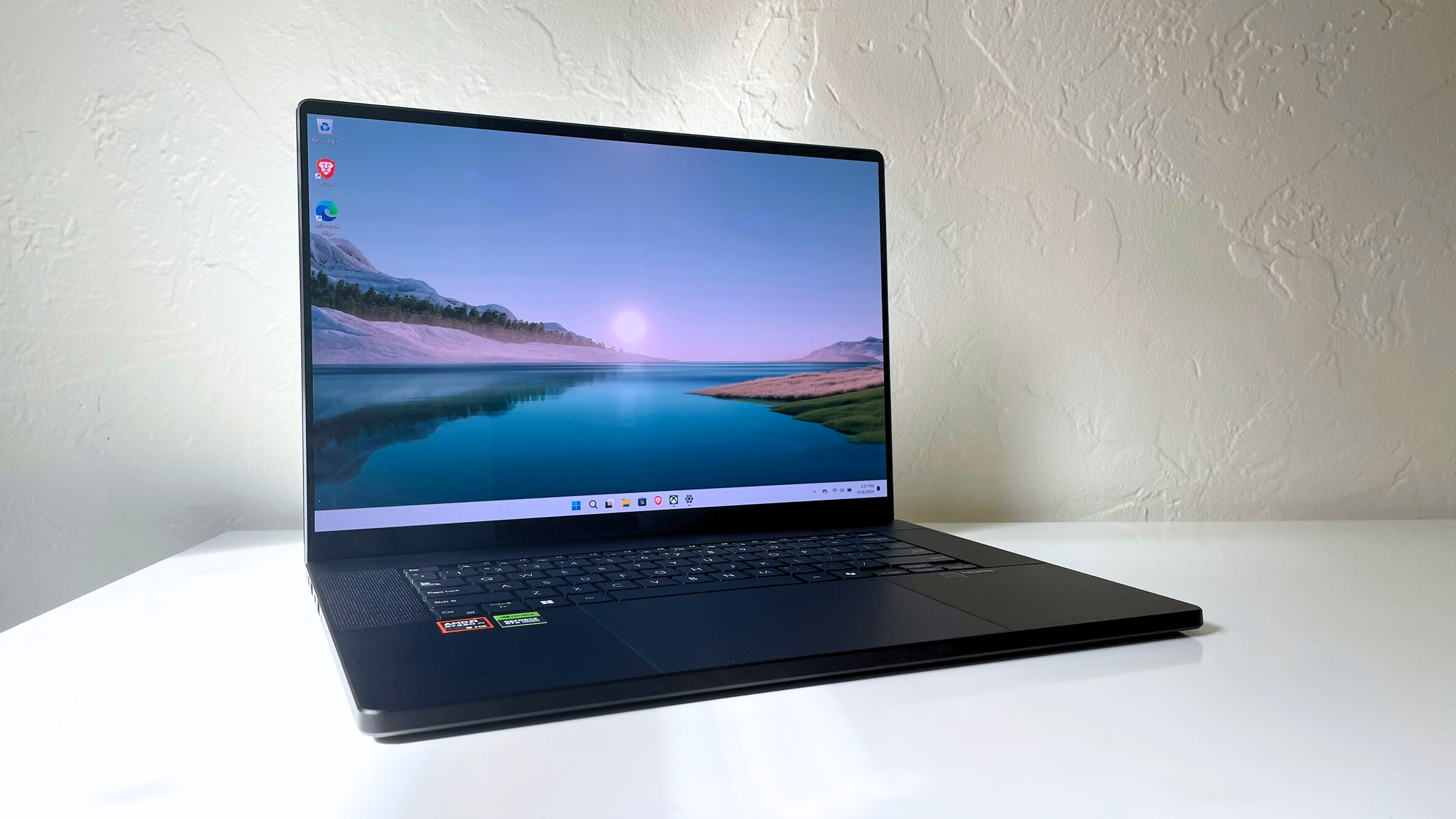
The Ryzen AI 9 HX 370 CPU at the heart of the ProArt P16 includes an NPU, or neural processing unit, which means it’s capable of running on-device AI tasks and apps. The NPU is capable of up to 50 TOPS (trillion operations per second) while the CPU as a whole is capable of up to 80 TOPS.
The Ryzen AI 300 series processors are AMD’s latest foray into the AI PC market and they have some serious competition from Intel and Qualcomm. Apple is also trying to get in on the on-device AI action on Mac, but we tested the MacBook Pro M3 Max before the Geekbench ML benchmark became one of our main tests.
However, the results from the Intel-powered Samsung Galaxy Book 4 Ultra and the Qualcomm-powered Samsung Galaxy Book 4 Edge still make for an interesting comparison:
| Laptop | Geekbench ML CPU | Geekbench ML dedicated GPU | Geekbench ML integrated graphics |
|---|---|---|---|
| ASUS ProArt P16 | 3,583 | 12,715 (RTX 4070) | 6,878 |
| MacBook Pro M3 Max (16-inch) | N/A | N/A | N/A |
| Samsung Galaxy Book 4 Ultra | 3,280 | 11,926 (RTX 4070) | 3,051 |
| Samsung Galaxy Book 4 Edge | 3,027 | N/A | 2,608 |
Some users may not be interested in on-device AI capabilities, but if you are, the ASUS ProArt P16 is a top choice.
This data includes benchmark results for the three leading AI PC processor families: AMD Ryzen AI 9 300 series, Intel Core Ultra, and Qualcomm Snapdragon X Elite. Even at a glance, the AMD Ryzen AI 9 HX 370 is the clear frontrunner across the board. The ASUS ProArt P16 has the top scores in all of our main AI benchmarks, particularly the integrated graphics test where it scored more than double that of its rivals.
Some users may not be interested in on-device AI capabilities, but if you are, the ASUS ProArt P16 is a top choice. It has some of the best AI performance scores we’ve seen so far paired with a powerful AI-ready CPU.
ASUS ProArt P16 (2024): Battery life
While the ASUS ProArt P16 achieved top scores in a few areas, it fell behind the competition in battery life. It lasted nine hours and 32 minutes in our battery test, which is just enough to get through a full workday, but doesn’t offer much wiggle room.
In comparison, the Samsung Galaxy Book 4 Ultra lasted an impressive 13 hours and 19 minutes while the MacBook Pro M3 Max blew the competition out of the water with a time of 18 hours and five minutes (almost double the ProArt P16’s time).
| Laptop | Battery life |
|---|---|
| ASUS ProArt P16 | 9:32 |
| MacBook Pro M3 Max (16-inch) | 18:05 |
| Samsung Galaxy Book 4 Ultra | 13:19 |
ASUS ProArt P16 (2024): Webcam
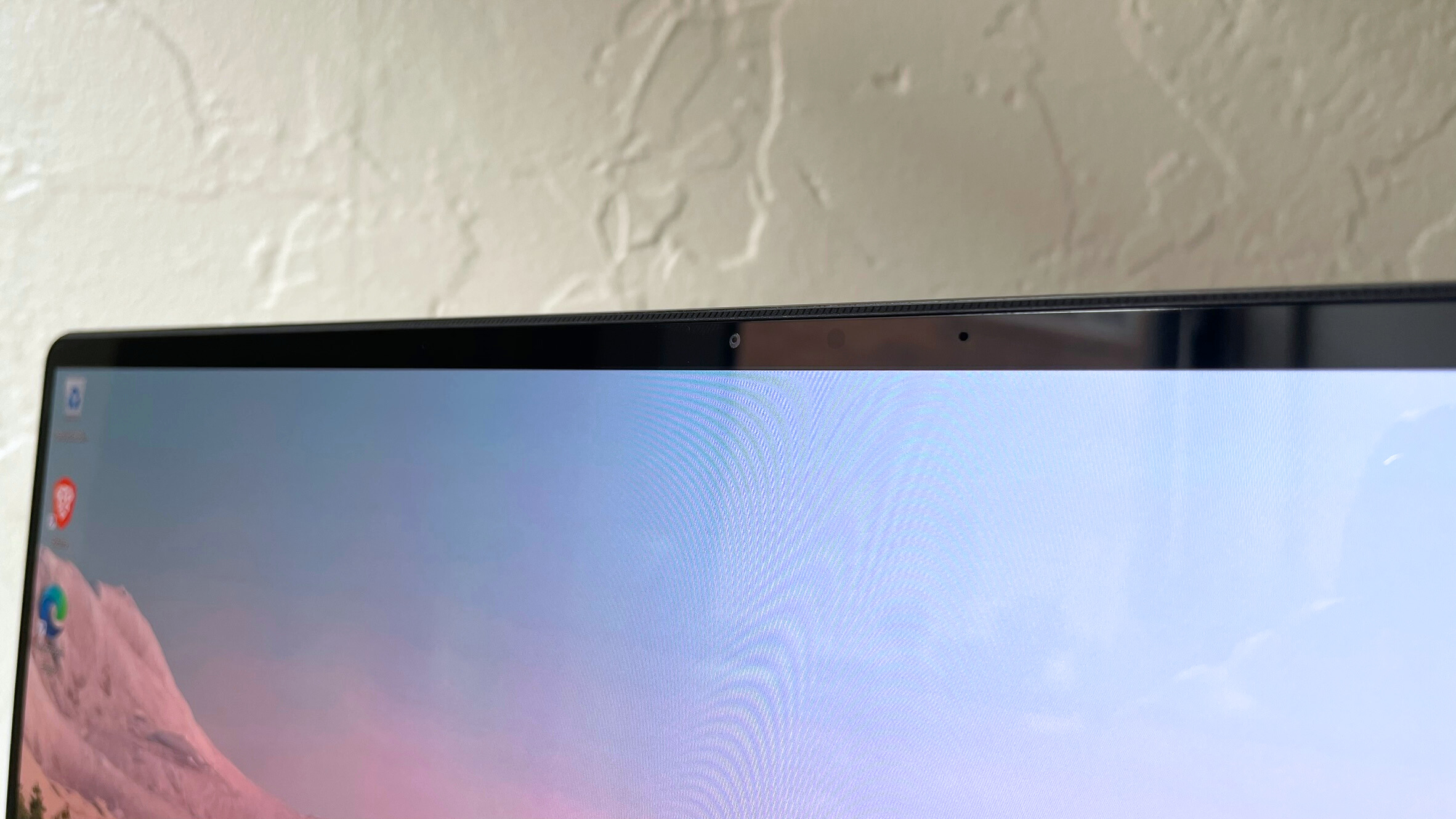
The ProArt P16 features a full HD webcam with IR functionality to use for facial recognition login with Windows Hello. Like most laptop webcams, the video quality isn’t great. It would be fine for an everyday video call or Zoom meeting, but it produces a grainy image. So, if you want to record higher-quality videos for YouTube, streaming, or other video content, you would be better served with one of the best external webcams.
ASUS ProArt P16 (2024): Heat
I never felt the ASUS ProArt P16 get uncomfortably warm during my hands-on testing. The top edge of the keyboard deck got a bit hot while gaming, but not enough that I felt it throughout the keyboard deck.
The ProArt P16 performed well on our thermal benchmark tests, as well. The touchpad averaged a cool 73.8 degrees and the hottest temperature we recorded was just 87.6 degrees, which is well below our 95-degree comfort threshold.
ASUS ProArt P16 (2024): Software and warranty
The ProArt P16 includes ASUS’s standard one-year warranty for parts and labor. If you often travel or commute and want some extra protection, you can purchase additional coverage through ASUS Premium Care Plus.
The ASUS ProArt P16 comes with Windows 11, including all of the standard pre-installed Microsoft apps such as the Xbox app, Microsoft Edge, and the Microsoft Store. You also get some pre-installed ASUS apps including the ProArt Creator Hub, MyASUS, CapCut, StoryCube, and the MuseTree AI image generator.
Bottom line
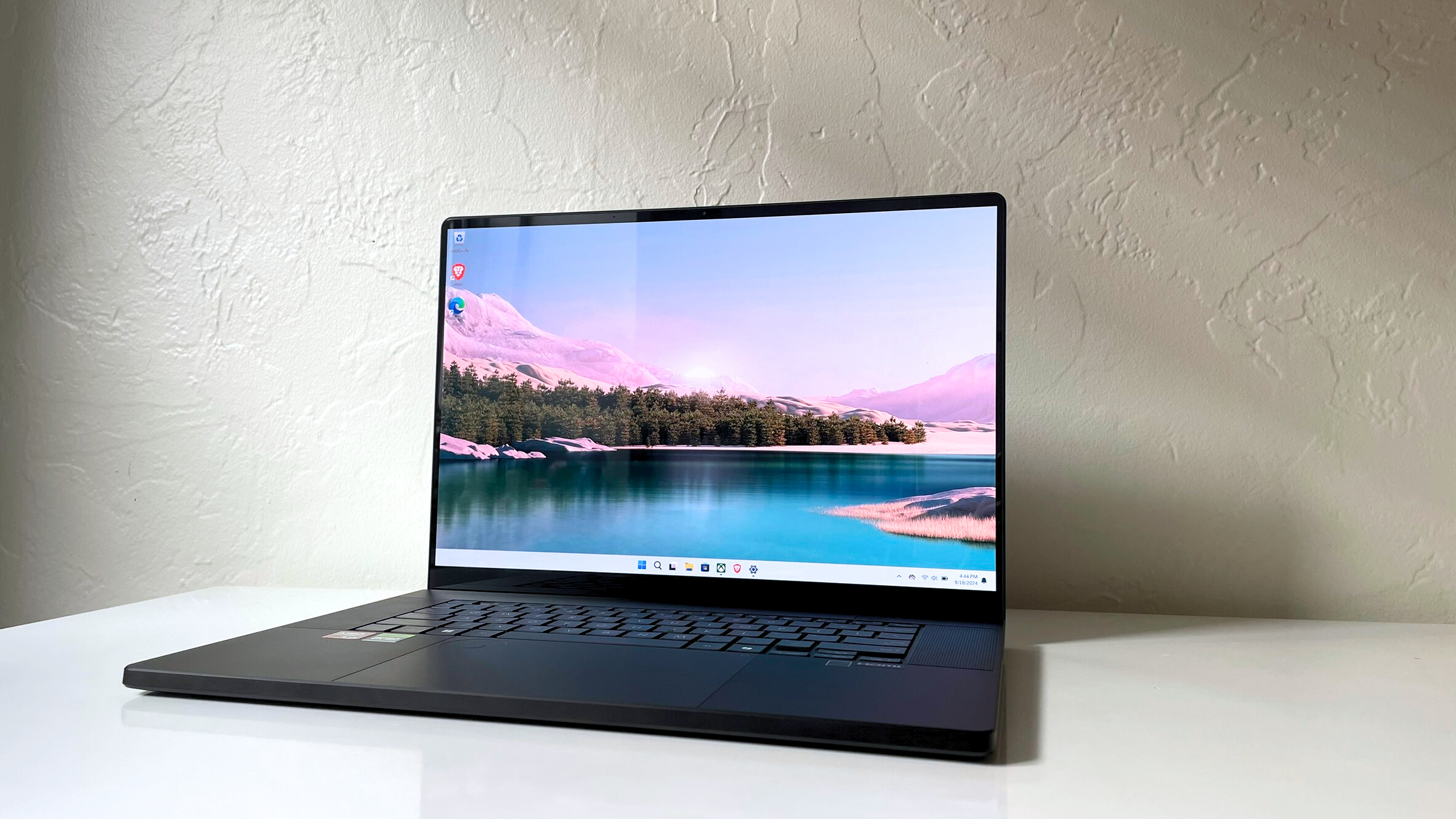
The ASUS ProArt P16 is a superb creator laptop, boasting top graphics and AI performance, stellar audio, and a stylish design. It noticeably outperformed the competition in our Adobe Creative Cloud benchmarks, as well, making the P16 a top contender for best creator laptop. Whether you want to work on video editing, graphic design, music production, animation, or anything in between, the ProArt P16 is a laptop worth considering.
The ASUS ProArt P16 is a superb creator laptop, boasting top graphics and AI performance, stellar audio, and a stylish design.
There are a few areas where the P16 could have scored better. The sub-10-hour battery life isn’t ideal, but it should still be enough to get you through a full workday if you aren’t gaming or video editing. We would have also liked to see better display benchmark scores given the creator focus for the laptop, but you won’t be disappointed with the sharp and colorful image. It’s also worth noting that the ProArt P16 isn’t a 2-in-1, which could be a deal breaker for some users. If that’s the case for you, take a look at the ProArt PX13 instead.
Despite those drawbacks, the ASUS ProArt P16 has a lot to offer, particularly when it comes to delivering the performance creative professionals need. Plus, you can’t go wrong with the stylish satin black design.

Stevie Bonifield is a freelance tech journalist who has written for PC Gamer, Tom's Guide, and Laptop Mag on everything from gaming to smartwatches. Outside of writing, Stevie loves indie games, TTRPGs, and building way too many custom keyboards.
